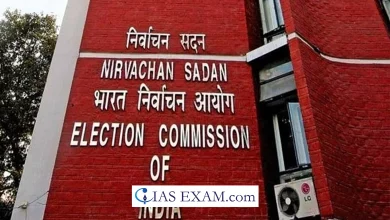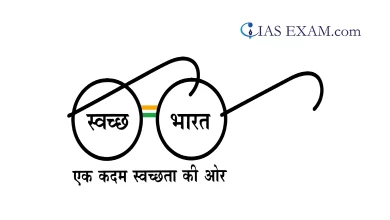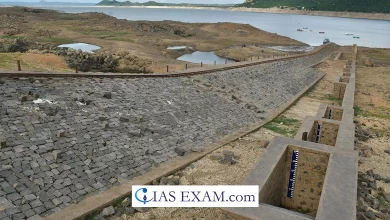Central Transfers – Arresting the decline in shares of States
GS Paper 2 - Indian Polity, Functions & Responsibilities of Union & States

Context
The equitable distribution of resources between the Centre and the States is a fundamental aspect of federalism in India. However, concerns have been raised regarding the declining share of states in the resources transferred from the Centre, spanning across successive Finance Commissions.
This editorial analysis delves into the intricacies of central transfers and the imperative need to arrest the decline in states’ shares, as highlighted by several states.
Vertical & Horizontal Dimensions
- The Fourteenth Finance Commission raised the share of States in the divisible pool of central taxes to 42% from 32%. This was revised to 41% when the number of States in India was reduced to 28.
- During 2020-21 to 2023-24 (BE): The effective share of States in the Centre’s gross tax revenues (GTR) averaged close to 31% It was significantly lower than the corresponding share of nearly 35% during 2015-16 to 2019-20.
- The increase in the share of cesses and surcharges to 5(eighteen point five)% of the Centre’s GTR during 2020-21 to 2023-24 (BE) from 12.8(twelve point eight)% during 2015-16 to 2019-20.
- In the case of the southern States, there has been a steady fall in their share whereas in between the 13th and 14th FCs, the northern and eastern states have also lost. The ‘gainer States’ were the hilly, central, and western States including Maharashtra.
Distance Criterion
- The shares of individual States in tax devolution depend on the criteria and the weights used by different Commissions. The distance criterion has been accorded the highest weight amongst these criteria.
- Its weight was reduced from 50% to 47.5% by the Thirteenth Finance Commission and further reduced to 45% by the Fifteenth Finance Commission. The Eleventh Finance Commission had given this criterion a weight of 62.5%.
- The equalization principle has been regarded as a key principle governing distribution. Economic and social justice demand this. On account of the distance criterion, low-income States such as Bihar and Uttar Pradesh have gained over time. They have lost on account of other criteria.
Understanding the Decline in States’ Shares
- Over the years, states have expressed dissatisfaction with the diminishing share of resources allocated to them from the Centre. This decline has been particularly pronounced in the shares of central taxes and grants-in-aid, which are crucial for states to meet their fiscal requirements and execute development projects.
- Several factors contribute to this decline, including changes in the formulae adopted by successive Finance Commissions, alterations in the criteria for resource allocation, and evolving fiscal dynamics at both the central and state levels.
- Moreover, the growing centralization of resources and decision-making processes exacerbates the disparity between the Centre and the States, hindering the latter’s ability to address local needs and priorities effectively.
Impact on States’ Fiscal Autonomy
- The dwindling share of resources poses significant challenges to states’ fiscal autonomy and hampers their capacity to implement developmental initiatives autonomously.
- States rely heavily on central transfers to bridge their fiscal deficits, finance critical infrastructure projects, and deliver essential services such as healthcare, education, and social welfare schemes.
- However, the declining share of central transfers constrains states’ fiscal maneuverability, forcing them to resort to alternative sources of revenue generation or curtail expenditure on crucial sectors.
- This undermines the principles of cooperative federalism and decentralization, impeding the efficient allocation of resources and inhibiting inclusive development across the nation.
Addressing the Imbalance in Central Transfers
To address the imbalance in central transfers and restore states’ confidence in the federal structure, concerted efforts are warranted from both the Centre and the States:
- Firstly, there is a need to revisit the criteria and parameters used for determining states’ shares in central transfers, ensuring greater equity and fairness in resource allocation.
- Enhancing fiscal devolution to states and empowering them with greater fiscal autonomy is imperative. This entails augmenting the states’ share in central taxes and rationalizing the distribution of grants-in-aid based on objective criteria such as population, fiscal capacity, and developmental needs.
- Fostering transparency and inclusivity in the decision-making processes of Finance Commissions is essential. States should be actively engaged in consultations and deliberations concerning resource allocation, ensuring that their concerns and priorities are adequately represented and addressed.
- Promoting fiscal discipline and accountability at both the central and state levels is crucial for optimizing the utilization of resources and enhancing the efficiency of public expenditure. Strengthening fiscal institutions, implementing prudent fiscal management practices, and leveraging technology for transparent fiscal governance can facilitate this endeavor.
Conclusion
Arresting the decline in states’ shares necessitates revisiting the allocation criteria, enhancing fiscal devolution, fostering transparency in decision-making processes, and promoting fiscal discipline. By fortifying the fiscal autonomy of states and ensuring equitable distribution of resources, India can realize its vision of inclusive and sustainable development, advancing the principles of cooperative federalism and strengthening the fabric of the nation.
SOURCE: The Hindu





.png)



